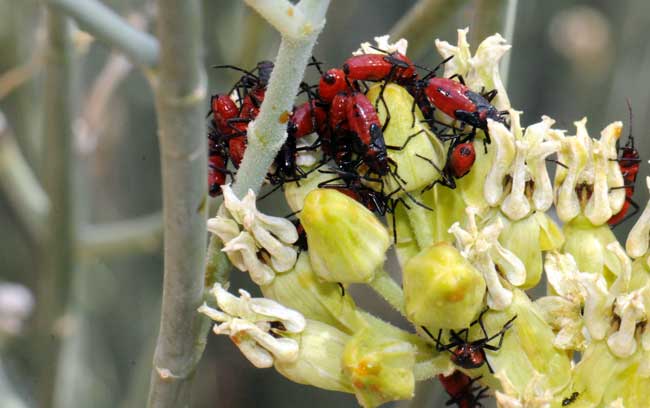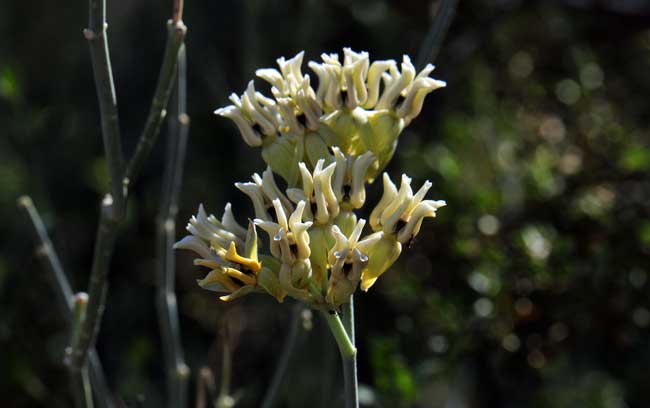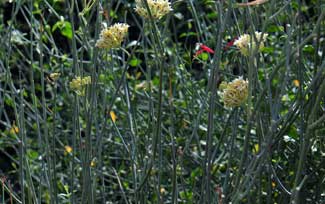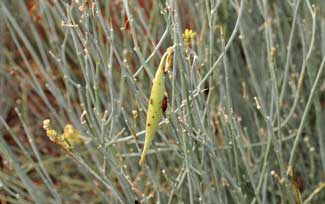Asclepias subulata, Rush Milkweed




Scientific Name: Asclepias subulata
Common Name: Rush Milkweed
Also Called: Cane Milkweed, Desert Milkweed; (Spanish: Jumete, Yamate, Candelilla Bronca, Ajamete, Talayote)
Family: Asclepiadaceae, Milkweed Family
Synonyms: ()
Status: Native
Duration: Perennial
Size: Up to 4.5 feet or more and 4 feet wide.
Growth Form: Forb/herb or subshrub; erect or ascending with multiple stems, branching, milky sap is typical of the family and genus.
Leaves: Green; opposite, leaves short-lived (ephemeral) emerging after sufficient rainfall, leaf shape is narrowly linear.
Flower Color: Whitish-green with yellowish white hoods; large flower clusters in terminal tips of branches, flowering stem or inflorescence is an umbel, fruit is a typical milkweed pod or follicle.
Flowering Season: April to October.
Elevation: Up to 3,000 feet.
Habitat Preferences: Dry slopes, mesas and plains and desert washes.
Recorded Range: In the United States Rush Milkweed is found in CA, AZ and NV. It is also found in Baja California and northwest Mexico. In Arizona is occurs in the central and western parts of Arizona.
North America & US County Distribution Map for Asclepias subulata.
U.S. Weed Information: No data available.
Invasive/Noxious Weed Information: No data available.
Wetland Indicator: No data available.
Threatened/Endangered Information: No data available.
Genus Information: In North America there are 76 species and 91 accepted taxa overall for Asclepias. World wide, The Plant List includes 215 accepted species names and includes a further 122 infraspecific rank for the genus.
In the Southwestern United States: Arizona has 29 species of Asclepias, California has 18 species, Nevada has 13 species, New Mexico has 26 species, Texas has 38 species, Utah has 17 species. All data is approximate and subject to taxonomic changes.
Comments: Rush Milkweed is a common native plant in its preferred habitats and makes an attractive desert landscape plant with its interesting growth form and unique flower clusters that attract butterflies and other insects.
Also see in Southwest Desert Flora; Arizona Milkweed, Asclepias angustifolia, Antelope Horns Milkweed, Asclepias asperula, Mexican Butterfly Weed, Asclepias curassavica, Dwarf Milkweed, Asclepias involucrata, Pineneedle Milkweed, Asclepias linaria, and Horsetail Milkweed, Asclepias subverticillata.
As reported in Arizona Flora, Rush Milkweed has been used as a laxative by Pima Indians. See other ethno-botanical uses at Native American Ethnobotany, University of Michigan, Dearborn.

